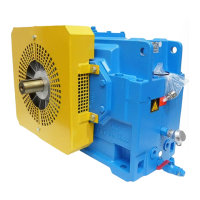Maintenance
16
Building Technologies FL-III Maintenance and Repair
CPS Fire Safety 08.2012
Visual inspection of the fibre-optical connectors
Inspect the endfaces of the fibre-optical connectors with a microscope suitable for
fibre-optical connectors with a magnification in the range of at least 100x up to a
maximum value of 200x. A service adapter E2000 should be used for the easy
opening of the protective flap of a fibre-optical connector.
Fig. 8 E2000 connector with fitted service adapter E2000 and the view on the
endface of the ferrule
The endface of the fibre-optical connector is an optical precision part. Even
minimal contamination has a negative impact on the quality of the controller’s
measurement. Fibre-optical connectors with a damaged endface must be replaced.
The cleaning process includes both the fibre-optical connectors of the sensor cable
that are connected from outside as well as the internal fibre-optical connectors.
Fig. 9 Example of a clean (left), contaminated (centre) and defective endface
(right) of a fibre-optical connector
The image on the left in fig. 9 shows a flawless endface of a fibre-optical
connector.
In the centre image, the optical fibre (centre point) is partially covered by a piece of
lint or a dust deposit. This contamination can be removed with suitable means.
The image on the right shows an optical fibre (centre point) that has been
damaged by scratches or burns by a contaminant. This fibre-optical connector
must be replaced.
Minor abrasions on the ferrule surface and small scratches outside of the fibre core
are acceptable, when the insertion loss values are within the permissible
specification of the controller (for details, see the installation manual or the
operation manual of the controller). The internal fibre-optical connectors must be
replaced by the manufacturer when holes, excessive mechanical wear, deep
scratches or non-removable contamination of the connector or of the ferrule
surface are present.
CAUTION!
Do not expose the ferrule to mechanical stress or damage such as prohibited
temperatures or hard tool surfaces!

